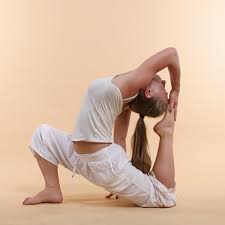Yoga dictionary. Kaivalya
 In the modern world there are many interpretations of this concept. Freedom can be on the economic level, mental, material, spiritual and so on. In most cases, when it comes to freedom, it means the ability to get what you want without any restrictions and act as a particular individual sees fit. And in this case, the freedom of the individual is determined by the boundaries of his desires and fantasies. And since no desire can be fully satisfied (either because of lack of resources or because of limited sensory perception), such freedom is very illusory.
In the modern world there are many interpretations of this concept. Freedom can be on the economic level, mental, material, spiritual and so on. In most cases, when it comes to freedom, it means the ability to get what you want without any restrictions and act as a particular individual sees fit. And in this case, the freedom of the individual is determined by the boundaries of his desires and fantasies. And since no desire can be fully satisfied (either because of lack of resources or because of limited sensory perception), such freedom is very illusory.
What is Liberation, of which there is much talk in the various branches of yoga and Dharmic religions? Patanjali in his philosophical treatise fully reveals this concept not from a material but from a transcendental point of view.
“Kaivalya” in Sanskrit means ‘loneliness`or ‘perfection’. In the Yoga sutras of Patanjali, the term Kaivalya refers to Liberation. Both literal translations of this word perfectly reveal the meaning of the concept of “Kaivalya”. Loneliness, that is, detachment from anything or anyone, self-sufficiency. And perfection, i.e. full disclosure his spiritual potential and implementation his purpose as a reasonable beings.
In the Yoga sutras of Patanjali, an entire Chapter, the Kaivalya pada, is devoted to the concept of Kaivalya. The title of the Chapter translates as ‘on absolute Liberation’.
Patanjali gives a brief explanation of what Kaivalya is at the very end of the Chapter, summarizing the above. In Sutra 34.1-3 in the version of A. Rigin’s translation it is said: “Kaivalya and Nirvana are completely identical. Kaivalya is the state of Purusha essence. Kaivalya is the vision of Purusha in the whole Universe and the whole Universe in Purusha.”
Purusha means spirit. And Nirvana means the absence of all kinds of suffering, literally — “napolnenie”. Thus Patanjali points out that Kaivalya is, first, the cessation of all kinds of suffering, second, the original state of Purusha, and third, Kaivalya is the state of non — duality, when for one who has attained this state the Purusha becomes visible in everything.
Patanjali describes how Kaivalya is attained in the previous Sutra, 33. In the version of the translation by A. Bailey said: “As a solitary unity becomes possible when the three qualities of matter (the three gunas or three forces of nature) do not have any more power over Ya. the Pure spiritual consciousness is removed in One.”
Thus, Kaivalya occurs when one attains the state of Nirguna — the liberation from the influence of the modes (qualities of material nature). This is preceded by what is described in Sutra 24 of this Chapter. In Swami Vivekananda’s translation, it reads: “one who has Learned to discriminate no longer perceives the mind as Atman.” Further progress on the path to Kaivalya is accomplished through perfection in detachment.
Patanjali writes about this in Sutra 28. In A. Bailey’s version of the translation it reads as follows:”a Person who develops detachment even in his quest for enlightenment and solitary unity eventually becomes aware of the overshadowing cloud of spiritual knowledge.” In other, more literal versions of translations, this state is defined as the state of Samadhi called “Cloud of virtue”.
The fruits of this condition is written in the following Sutra 29 of this Chapter. In A. Bailey’s version of the translation, the Sutra reads: “when this stage is reached, then hindrances and karma are overcome.” Thus, achieving the state of Samadhi destroys the fetters of karma, namely samskara (karmic prints), which are the prism through which a person perceives reality distorted. Breaking the shackles of karma leads to a pure perception of reality, without the attachment and dislike that are conditioned by the Samskaras.
On the state of consciousness of one who has attained Samadhi, Patanjali writes a little earlier, in the sixth Sutra of the same Chapter. The translation of Swami Vivekananda reads: “only that Citta is free from desires which has attained Samadhi.” What happens after attaining Kaivalya is described in the seventh Sutra of the same Chapter. In the version of A. Bailey’s translation, the Sutra reads as follows: “the Activity of the liberated soul is free from pairs of opposites. There are three kinds of activities of other people.” This Sutra deals with the accumulation of karma. And it is said that a liberated soul accumulates neither good nor bad nor neutral karma.
A similar concept is discussed in more detail in the Bhagavad-Gita. Chapter four, verse 20, says: “Free from attachment to the fruits of his labor, always satisfied and independent of everything, he does not perform karmic activities, although he works tirelessly.”
Thus, according to Patanjali, Kaivalya is the ultimate goal of yoga. Kaivalya is achieved through Dhyana, which leads to the state of Samadhi.




